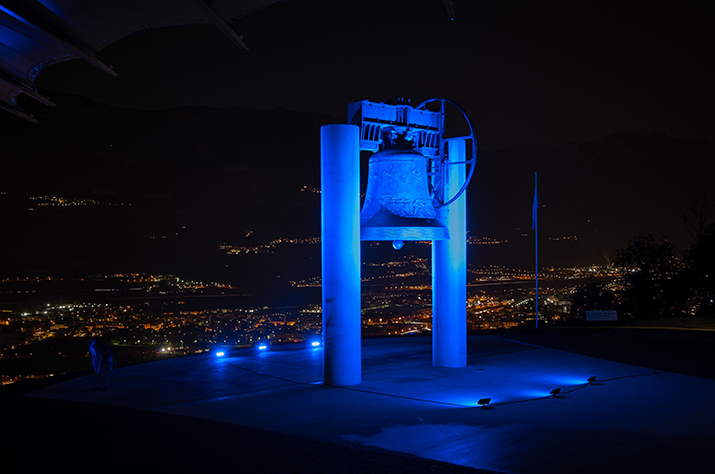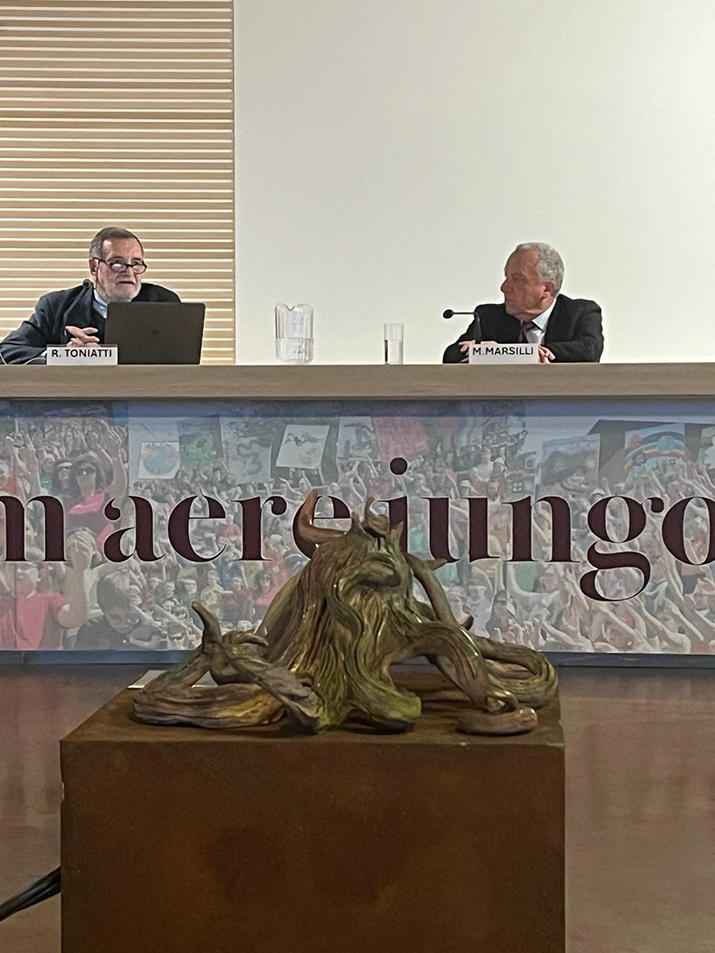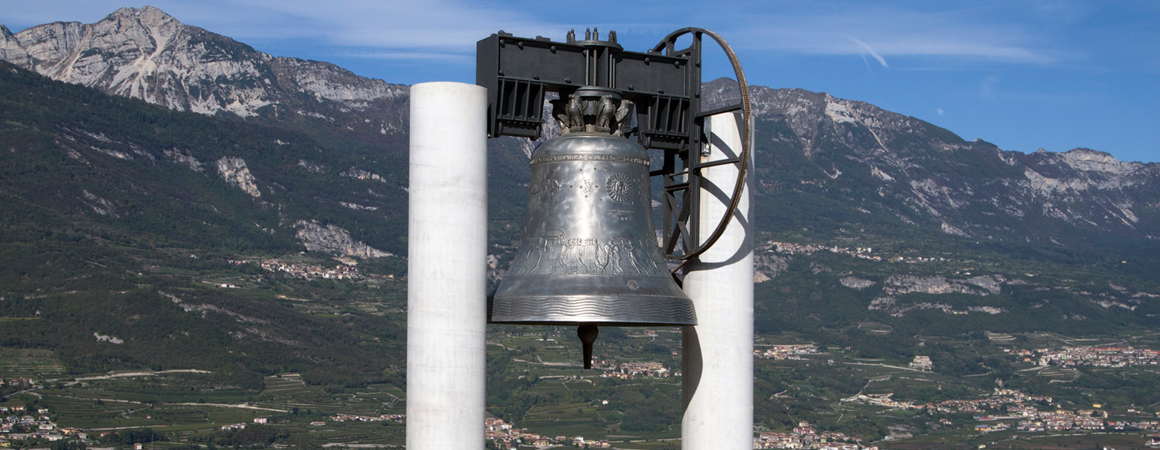PROTECTION OF FUNDAMENTAL RIGHTS IN EUROPE
We asked various descendants of Trentino emigrants to tell their stories in first person, emphasizing how their origins have guided and influenced them in life. This would not have been possible without the active and cordial collaboration of the ‘Trentini nel Mondo’ Association, founded in 1957 working for social solidarity and as support for aggregation and assistance for Trentino migrants and their descendants. This month’s figure is the Brazilian social activist João Pedro Stedile.
The definition and protection of fundamental rights in Europe and in the world were born in the era of modernization and date back, theoretically, to the development of Enlightenment thought and, historically, to the great English, American and French revolutions. It is a long and gradual process, most likely still ongoing, which developed in the context of the recognition of religious freedom as an exclusive function of the nation state and - since the Treaty of Westphalia (1648) - has become the model for the organization of public power which progressively acquires the form of a liberal state of law.
In particular, given the supremacy of Parliament as an elective and representative body and the primacy of the law over any other manifestation of the will of the State, the judge is portrayed, according to Montesquieu's well-known definition, as "the mouth that pronounces the word of the law", and, therefore, judicial interpretation is conceived as syllogistic reasoning, strictly non-evaluative, expressive exclusively according to the will of the legislator.
In summary, the founding principles of the protection of fundamental rights consist, firstly, in the close relationship between fundamental rights and the national sovereignty of the State and, secondly, in the outline of the role of the judge as strict enforcer of the law.
In Europe, both original principles have experienced a decisive evolution, also in relation to the planetary developments promoted by the United Nations Organization, without however acquiring an authentically shared conception of human rights and without providing support for protection against violations of the fundamental rights of individuals. In fact, also due to the horrors suffered during the Second World War, Europe made its own fundamental and alternative choices.
The Council of Europe was established in 1949, with its headquarters in Strasbourg and already in 1950 the Convention for the Protection of Human Rights and Fundamental Freedoms was concluded, the Preamble of which states, among other things, «The governments signatory hereto, being members of the Council of Europe (...) are like-minded and have a common heritage of political traditions, ideals, freedom and the rule of law». The European Convention on Human Rights therefore expresses a declaration of the existence, in the present and the now, of a common conception. Furthermore, it establishes a permanent jurisdiction - the European Court of Human Rights - for the protection of individual cases and for the adoption of sentences for the restoration of violated rights and the sanction of the Member States responsible for such violations. An individual right of access to the Court is recognized for each and every human being regardless of citizenship of any particular Member State.
A second perspective relative to the protection of fundamental rights in Europe concerns the system in force in the European Union. This is an even more interesting and paradigmatic perspective of European liberal civilization.
The treaties through which the European Communities were established, were actually not intended to actuate any procedures for the protection of fundamental rights: the focus of supranational integration was in fact limited to the functional scope of market integration and, in that context, the formal expression of "fundamental rights” referred exclusively to the four fundamental freedoms of movement of people, capital, goods and services. With the progressive consolidation of the exercise of government function and of legislative and administrative powers, so too the need for a corresponding identification of limits to the public action of the community institutions progressed. Such limits must include, first and foremost, the protection of the fundamental rights of individuals.
In the absence of explicit rules within the pages of the founding treaties, the Court of Justice, based in Luxembourg, found itself in the difficult situation of having to choose between a lack of protection of fundamental rights or between the guarantee of protection but upon establishing relevant legislative grounds. The Court identified these grounds both in the common constitutional traditions of the member states, by which it declared it was compelled to abide, and in the obligations of the European Convention to which all the member states were contracting parties. Both sources were valid, in the silence of text, as "general principles" of the European community, now the European Union. Only in 2000 was the Charter of Fundamental Rights of the European Union adopted in Nice, which came into force as a source of constitutional law with the Treaty of Lisbon in 2007.
Based on this, it should be noted that the protection of fundamental rights in Europe is divided into three institutions: first, the system of the Member States, based on their respective Constitution and national laws, under the guarantee of their respective jurisdiction and with the guarantee of the respective supreme courts and the control of the constitutional legitimacy of the laws exercised by the respective constitutional courts; secondly, by the regulations pertaining to the European Convention and with the guarantee of the European Court, regarding violations committed by the contracting States; thirdly, by the European Union legal system, with the guarantee of the Court of Justice, against violations carried out by EU institutions and member states within the scope of application of EU law.
It is, therefore, an arrangement of the sources of "constitutional pluralism" and "jurisdictional pluralism", i.e. the jurisdictional guarantee articulated on three orders of Courts, each supreme in its own respective system. This leads to a problem of "definition of the relationship" between these three orders of sources of law and jurisdictional guarantee. It is a relationship without a formal hierarchical structure where each system and above all each jurisdiction claim its own primacy.
The relationship between sources and jurisdictions is only ensured in actual fact by a practice that has been referred to as "judicial dialogue", i.e. on the "good will" of national judges, who are oriented towards giving the sources of written law an interpretation compliant with European sources, and also by European judges who take national law into account when interpreting European law. The method of dialogue between judges (which can lead to a sort of interpretative ping pong between one court and the other) leads to a case-by-case revision.
In conclusion, it can be stated that the protection of fundamental rights is a «shared responsibility» between European and national institutions and that this arrangement creates a sophisticated form of «European constitutional democracy».








